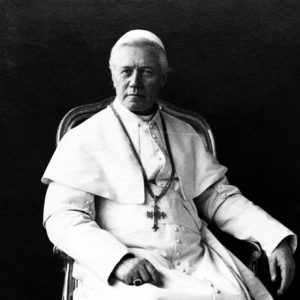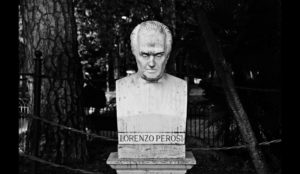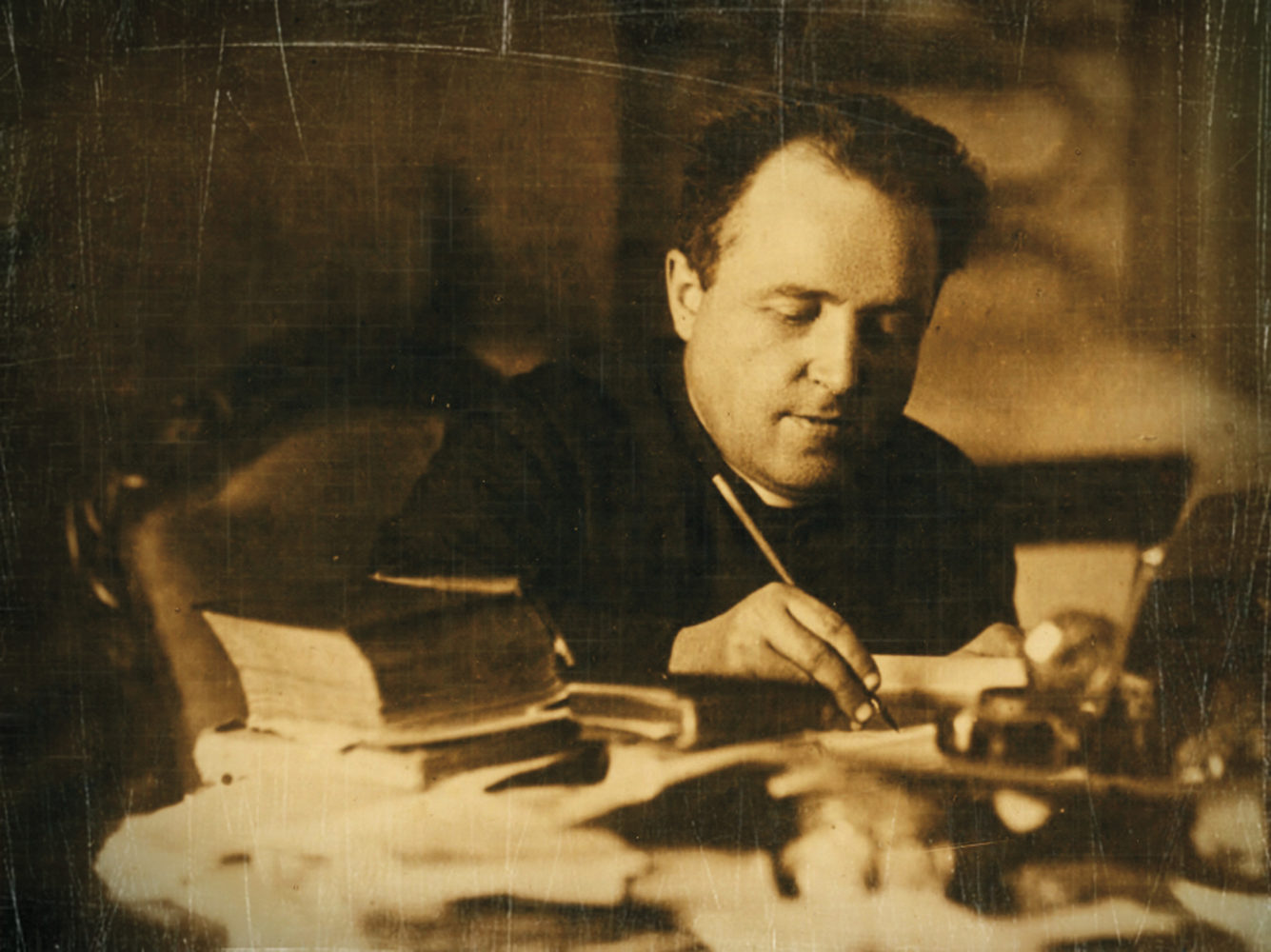Von Aurelio Porfiri, Komponist, Dirigent, Schriftsteller und Pädagoge
Die Welt der Kirchenmusik hat um die Jahrhundertwende zum 20. Jahrhundert einige Wendepunkte erlebt. Die meisten Leser werden dabei an die Reformen nach dem Zweiten Vatikanischen Konzil denken, die einen erheblichen Einfluss auf die Musik der katholischen Kirche hatten. Aber in der Tat war der erste Wendepunkt der 22. November 1903. An jenem Tag erging von Papst Pius X. ein Motu Proprio (ein Dokument aus eigener Initiative, ohne den Umweg über die Amtsorgane der Kurie).
Das Motu Proprio befasste sich speziell mit geistlicher Musik und hatte die Absicht, die Praxis der Kirchenmusik zu reformieren, um eine Art “Reinigung” vom starken Einfluss des Opernstils im Haus Gottes durchzusetzen: “Wohl ist Unser Herz von hoher Freude erfüllt über das Gute, und zwar nicht wenige Gute, das in den letzten Jahrhunderten auch in unserer erhabenen Stadt Rom und in einer Anzahl von Kirchen unseres Vaterlandes geschaffen worden ist; vornehmlich, aber über das, was einige Völker mit Weisheit geschaffen haben, indem hervorragende Männer, vom Eifer für den Gottesdienst beseelt, mit Billigung des Apostolischen Stuhles und unter Leitung der Bischöfe sich zu blühenden Vereinen zusammengeschlossen und die Kirchenmusik fast in allen Kirchen und Kapellen in würdigster Weise gerettet haben. Doch finden sich solche Fortschritte keineswegs überall. Daher gehen Wir, gestützt auf Unsere eigene Erfahrung, auf die sehr zahlreichen Klagen ein, die von allen Seiten Uns vorgetragen wurden in der kurzen Zeit, seit es dem Herrn gefallen hat, Unsere geringe Person zum höchsten Gipfel des römischen Pontifikates zu erheben. Wir können nicht länger zuwarten, erachten es vielmehr als eine unserer ersten Pflichten, dem entgegenzutreten und das zu verurteilen, was bei den Riten des Kultes und den gottesdienstlichen Verrichtungen von der geraden Richtschnur abweicht. Denn es ist Uns innerste Herzenssache, dass der wahrhaft christliche Geist überall in allen Gläubigen wieder aufblühe und unvermindert erhalten bleibe. Daher müssen Wir vor allem für die Heiligkeit und Würde des Gotteshauses sorgen. Denn dort versammeln sich die Gläubigen, um diesen Geist aus der ersten und unentbehrlichen Quelle zu schöpfen, nämlich aus der aktiven Teilnahme an den hochheiligen Mysterien und dem öffentlichen, feierlichen Gebet der Kirche. Vergeblich aber wäre Unsere Hoffnung, dass Gott die Erreichung dieses Zieles seinen Segen reichlich über uns ergieße, wenn unser Gottesdienst, anstatt mit lieblichem Wohlgeruch emporzusteigen, im Gegenteil dem Herrn die Geißel in die Hand drückte, mit der einst unser göttlicher Erlöser die unwürdigen Tempelschänder verjagt hat.” (Zitatübersetzung: www.kathpedia.com)
Trotz der diplomatischen Wortwahl des Papstes drang der theatralische Stil in das Repertoire unzähliger Organisten und Chöre ein, und ebenso in die Aufgabe, authentische Kirchenmusik wiederherzustellen (deren wichtigste Grundlage Gregorianik und Renaissance-Polyphonie sind), die keine leichte war, trotz der Unterstützung durch Cäcilienverbände. Der Papst brauchte zweifellos jemanden, der helfen konnte das Repertoire zu erneuern, und der Chören, die mit Gregorianik oder komplexer Polyphonie von Palestrina überfordert waren, etwas anbieten konnte, das zugänglicher aber dennoch im Einklang bleib mit der Würde des Gotteshauses. Oder, der guten Chören sogar moderne Kompositionen anbieten könnte, die denen der Antike nicht unwürdig waren.

Als Papst Pius X noch Patriarch von Venedig war, war sein Kantor ein junger Priester, den er selbst im Jahre 1898 für die Chorleiterstelle des Chores der Sixtinischen Kapelle vorgeschlagen hatte. Dieser hochbegabte Mann, an den er sich zum Zeitpunkt seiner Berufung zum Pontifikat wieder erinnern sollte, war Lorenzo Perosi. Er wurde im Jahre 1872 in Tortona (Norditalien) geboren. Von seinem Vater, selber Chordirigent, erhielt er seine ersten Musikunterweisungen. Später studierte er am Konservatorium in Mailand und an der Kirchenmusikhochschule in Regensburg (bei seinem berühmten Lehrer Franz Xavier Haberl). Schon mit sehr jungen Jahren spürte er die Notwendigkeit von Kirchenmusikreformen, und er schrieb zu diesem Zweck eigene Kompositionen. 1894 wird er zum Priester ernannt. Nachdem er einige Chöre geleitet hatte (darunter den berühmten San Marco Chor in Venedig) wurde er 1898 als Vize-Dirigent an die Sixtinische Kapelle in Rom berufen. Im Jahre 1902 wird er deren Chefdirigent. Er behielt diese Position bis zu seinem Tod 1956, aber nicht ohne erhebliche Probleme, deren größtes seine psychischen Störungen waren, die ihn gelegentlich außerstande setzten, seine Aufgaben ordnungsgemäß erfüllen. Fraglos war er zu seiner Zeit sehr beliebt, und seine Musik fand sich in den Repertoires unzähliger Kirchen auf der ganzen Welt. Noch heute wird seine Musik von vielen Chören weltweit aufgeführt. Er war ein großer Oratorien-Komponist (Il Natale del Redentore, La Risurrezione di Cristo, Transitus Animae, L’Entrata di Cristo in Gerusalemme usw.), was ihm eine Fangemeinde unter den Sängern, Organisten und Chorleitern einbrachte. Aber zweifellos war neben den Oratorien seine liturgische Musik der Schlüssel zu seinem Erfolg: Messen, Motetten, Responsorien und unzählige Kompositionen für die katholischen Liturgie, Kompositionen, die seinen selbst heute noch fast beispiellosen Status in der Kirchenmusik begründen.

Dr. Michael Dubiaga Jr. erinnert in einem Essay im Journal Seattle Catholic (30.11.2005): “Lorenzo Perosi war ein musikalisches Wunderkind, dessen bemerkenswertes Talent und Frömmigkeit ihm in frühem Alter schnelle Fortschritte brachte. In ganz Europa bekannt und respektiert, wurde Don Perosi häufig von Musikern in Rom aufgesucht. Von seinen multidimensionalen Aktivitäten sind heute seine zahlreichen Kompositionen von Enthusiasten aus vielen Ländern geschätzt. Seine Produktivität war atemberaubend — mehr als ein Dutzend Oratorien für Solisten, Chor und Orchester, vielleicht dreißig Messen, Hunderte von Motetten, Psalmen und Hymnen, Orchestersuiten, Konzerte für Violine, Klavier und Klarinette, Dutzende Streichertrios, Quartette und Quintette und verschiedene Gelegenheitswerke. Er unterhielt lebenslang eine mehrsprachige Korrespondenz, die in der vatikanischen Bibliothek aufbewahrt wird. Nur wenige Menschen haben einen so großen Einfluss auf die Entwicklung der katholischen Kirchenmusik der ersten Hälfte des zwanzigsten Jahrhunderts genommen”.
Also, was war das Geheimnis seines Erfolges? Warum bezeichne ich ihn als Rätsel? Tatsächlich verweisen Kritiker auf eine zu starke Vereinfachung der musikalischen Mittel in einigen seiner Stücke, werfen ihm vor, technisch nicht auf dem Niveau gewesen zu sein, das erforderlich gewesen wäre. Dies, so Kritiker, führe zu einer Herabstufung der notwendigen “Qualität der Formen” (wie per Motu Proprio von St. Pius X gefordert), und brächte Elemente von Banalität in die heiligen Gefilde der liturgischen Musik. Davon mag einiges wahr sein. Es ist auch wahr, dass er beabsichtigte, wie schon vorher erwähnt, auch weniger fortgeschrittenen Chören etwas anzubieten. Aber die von seinen Kritikern angeprangerte Gefahr hat eine reale Dimension, denn seine vielen Nachahmer begannen, ähnliche Kompositionen zu produzieren, aber ohne die Inspiration, die in Perosis Werken zu spüren ist. Das war mir in meinen vielen Kontakten mit der Musik dieses Meisters stets ein Rätsel: in seiner Musik gibt es eine geheimnisvolle Qualität, die am Ende “den Tag rettet”. Man fühlt es, selbst wenn die Technik nicht immer ist, wie sie sein sollte. Aber alles ist von einer Art “spiritueller Magie” umgeben, die seiner Musik eine innige Atmosphäre verleiht. Bei einfachen Motetten wie Ave Maria, Jubilate Deo, Ecce Panis Angelorum und vielen anderen kommen wir nicht umhin, von ihrer schlichten Schönheit und großen Wirksamkeit berührt zu werden. Wenn jemand etwas Schwierigeres versuchen will, neben den sehr beliebten Messen (Prima Pontificalis, Secunda Pontificalis, Te Deum Laudamus, Benedicamus Domino, usw.), kann man sich dem Magnificat für gemischten Chor und Orgel zuwenden, wo in jedem Takt melodische Inspiration und instinktiver Sinn für musikalische Form zu spüren sind. Oder das schöne O Sanctissima Anima, eine faszinierende Motette für gemischten Chor, deren spirituelle Aussage so überwältigend ist, dass Sie sie am liebsten auf Knien hören möchten.

Heute, da wir seinen 60. Todestag feiern, was bleibt von ihm? Sicherlich ist er immer noch sehr beliebt, und nicht nur in Italien. Viele Chöre auf der ganzen Welt führen immer noch seine Musik auf, sicherlich seltener als früher, aufgrund der Krise, der die katholische Kirchenmusik im Allgemeinen unterliegt. Ich glaube nicht, dass sein Name jemals aus den Repertoires verschwinden wird, aber natürlich ist sein Einfluss geringer geworden. Hoffen wir auf eine internationale Wiederentdeckung des Beitrags, den dieser bescheidene Priester zur Kirchenmusik geleistet hat, und auf eine gründliche Studie über die “mysteriösen” Qualitäten seiner Musik, die Quellen seiner Inspiration und seinen Platz in der Musikgeschichte.

Aurelio Porfiri ist ein italienischer Komponist, Dirigent, Schriftsteller und Pädagoge. Er hat 13 Bücher und mehr als 300 Artikel veröffentlicht. Seine Kompositionen wurden von mehreren Verlagen in Italien, Frankreich, Deutschland, den USA und China veröffentlicht. Er lebt in Rom. E-Mail: aurelioporfiri@hotmail.com
Übersetzt aus dem Englischen von Wolfgang Saus, Deutschland

